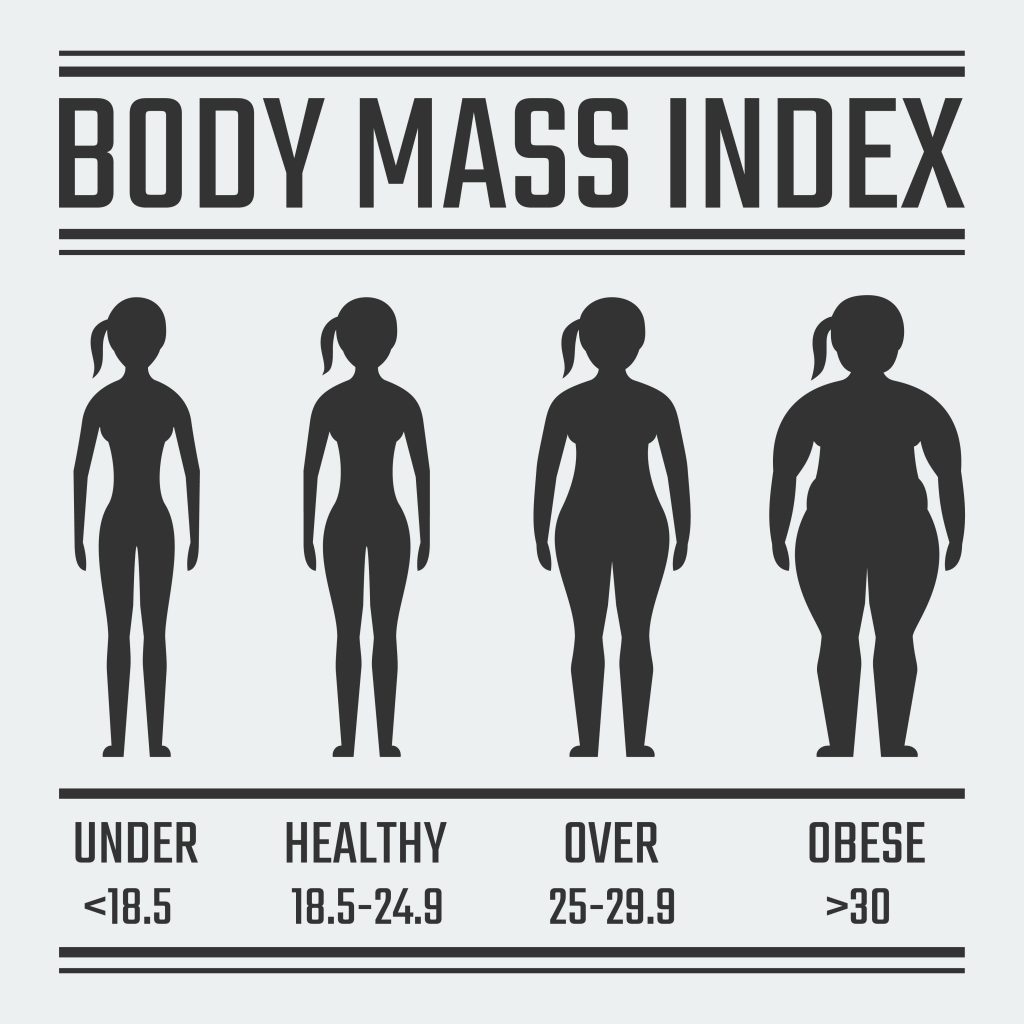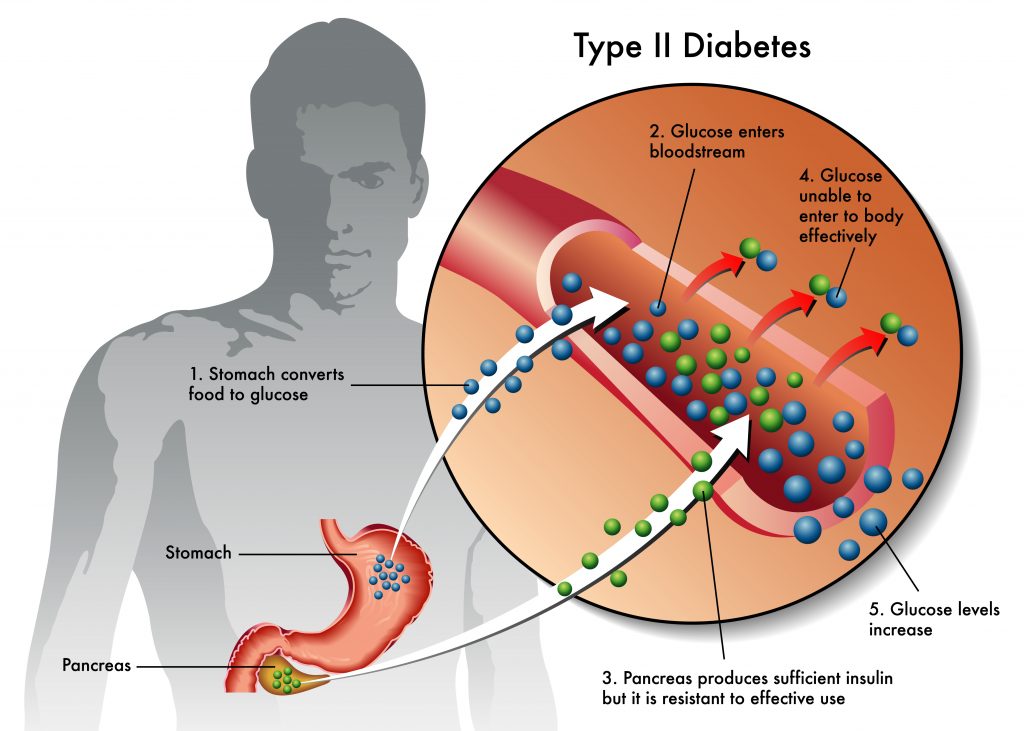Dr Michael Griffin – The Role of Transcription Factors in Chronic Adipose Tissue Inflammation
A transcription factor known as Early B-Cell Factor 1 (EBF1) is key to the formation of fat cells, called adipocytes. Although it is also active in mature adipocytes, the function of EBF1 at this stage has been unclear. Dr Michael Griffin at Sam Houston State University in Texas is investigating how EBF1 is involved in the process of adipose tissue inflammation caused by obesity. This type of inflammation is believed to be the underlying cause of a multitude of diseases ranging from diabetes to cancer.
Obesity Worldwide
The World Health Organisation estimates that globally, around 40% of people are overweight and 13% are obese. Defined as having an excess of fat that can have adverse effects on health, an overweight or obese diagnosis is usually given after a person’s body mass index (BMI) is shown to be over 25 or over 30, respectively. BMI is calculated by dividing a person’s weight by the square of their height in meters (kg/m2). With prevalence in under 19s rising from 4% in 1975 to 18% in 2016, more deaths are now linked with being overweight than underweight worldwide.
Gaining excessive weight occurs when calories, or energy intake, is greater than energy expended. Commonly, this is down to too little physical activity and consuming fat-rich and sugary food and drinks, which are more readily available than they used to be. The modern age has introduced more sedentary jobs and easier access to transportation, both of which decrease a person’s calorie expenditure, and this may explain the rise in obesity levels.

Risks of Obesity
Being overweight can give rise to numerous health consequences – cardiovascular diseases, such as strokes, were the number one cause of death globally in 2012. Other risks include musculoskeletal disorders like osteoarthritis, numerous cancers like those of the liver, kidney and gallbladder, and in addition, type 2 diabetes mellitus.
There are two types of diabetes – type 1 diabetes is an autoimmune disorder, which causes your body to destroy the cells in the pancreas that make insulin. Type 2 diabetes is a condition that begins when, for any number of complex reasons, tissue cells like muscle and fat become resistant to the actions of insulin. Eventually, this wears out the pancreas, whereby it doesn’t make enough insulin, or it becomes ineffective. This form, generally caused by being overweight, accounts for 90% of all diabetes cases.
Normally, your pancreas produces and releases the insulin hormone in response to blood glucose (sugar) levels rising after eating and drinking. Insulin allows the glucose to enter cells to give them fuel for metabolic processes. However, if the insulin is not working properly, or your cells don’t respond to it, glucose in the blood will become dangerously elevated. More and more insulin will be released to try and combat this until eventually, the pancreas tires out and makes too little insulin, leading to a condition called hyperglycaemia. Without proper management, type 2 diabetes can gradually lead to damage throughout the body, with the potential to cause debilitating or even life-threatening ailments. Damage to the kidneys, eyes, feet, gums and other organs may all occur if blood sugar levels are not properly controlled.
Sufferers of type 2 diabetes may experience fatigue, unusual thirst, slow-healing injuries and blurred vision, but their symptoms tend to be easier to manage than those with type 1. A balanced diet and active lifestyle are great ways to combat type 2 diabetes as well as obesity, but medication and insulin injections can also be given.
EBF1 in Adipocyte Inflammation
Another potential consequence of obesity is fat cells (adipocytes) becoming inflamed. Inflammation is a natural immune response to harmful stimuli such as injury and infection, with the goal of protecting the body. Various chemicals, antibodies and proteins are released and sent to the affected site, in addition to increased blood flow. In healthy responses, inflammation is acute, meaning it is confined to the area of concern and dies down once the threat has passed. However, when this does not happen, perhaps because the trigger has not been resolved, inflammation can become chronic.
Chronic inflammation of adipose tissue may be an underlying cause of many of the health issues that can accompany obesity, such as tissue damage, insulin resistance, diabetes, cancer and others, because they often go hand-in-hand. In fact, it has been shown that people who are obese typically have two to three times more immune factors (small molecules involved in the immune and inflammatory response) in their blood plasma than what is considered normal. Adipocytes and the mechanisms by which inflammation occurs in them is the focus of Dr Michael Griffin’s research.
Based at Sam Houston State University in Texas, Dr Griffin and his team have gained novel insights into the biological pathways in adipocytes. He and his team determined that a promising target for investigation was a transcription factor called Early B-Cell Factor 1 (EBF1).
Transcription factors are proteins that control the first step of decoding the genome and making proteins that carry out the function of cells – transcription. Binding to a specific DNA sequence, they determine whether or not individual genes are allowed to be transcribed, which ensures the genes are expressed at the right time, place and amount. EBF1 was already known to be important in the formation of adipocytes, but very little information was available on why it can be found at high levels in mature cells and therefore which pathways it might regulate that lead to inflammation. To rectify this, the team set out to investigate the function of EBF1 in mature adipocytes and its targets for regulation.

Investigating EBF1 Regulation and Function
The team utilised two techniques in their research – transcriptional profiling and genome location analysis. Transcriptional profiling, also known as expression profiling, measures the expression of genes in a cell. When a gene is expressed, it means that it has gone through transcription to produce a small RNA strand which will go on to code for a protein. Therefore, to find out which genes are being expressed in a specific cell, you can measure how much of their consequent RNA is present in it.
Dr Griffin used this technique in adipocytes that had had the genes coding for the EBF1 knocked out (removed), resulting in cells that were deficient in the transcription factor. This meant that they could decipher which genes it controls and normally allows to be expressed. They also used genome-wide location analysis to establish where the genes that code for EBF1 are found on the genome.
He identified around 35,000 places where EBF1 binds to DNA to aid gene regulation. A few thousand of these sites are specific to adipocytes, meaning they are not found in other types of cells. Most of the sites that EBF1 occupies are called enhancers, which are small sections of DNA that promote (increase the likelihood) of a particular gene being transcribed when a transcription factor is bound to it.
In addition to these findings, the team found that in cells that lacked EBF1, the signalling from multiple metabolic and inflammatory pathways was reduced, suggesting that the transcription factor directly regulates their components. Some of the processes affected included the PI3K/AKT pathway, which regulates the cell cycle and survival, the MAPK pathway, which reads external signals to elicit appropriate responses and, the STAT1 pathway, which is involved in the immune response.
In total, Dr Griffin observed that the expression of 600 genes was altered by knockout of EBF1 in mature adipocytes. Many of these genes encode important intermediates in various signalling pathways, interestingly, including ones involved in inflammatory responses. The team also noticed a reduction in glucose uptake into cells in response to insulin, as well as diminished lipogenesis (fat creation). Overall, they concluded that EBF1 in fat cells plays an important role in regulating inflammation and insulin signalling.

Digging Deeper
The results of Dr Griffin’s initial study have helped us to understand the role of EBF1 in adipocytes and how it utilises transcription regulation to alter a number of signalling pathways as well as inflammation.
Now, Dr Griffin wants to focus his attention on digging deeper into this topic and finding out how EBF1 regulates inflammatory signalling in adipocytes. He has uncovered novel protein-protein interactions between the EBF1 protein and another well-known inflammatory transcription factor. This means that inflammatory pathways that we are already aware of are likely to kick off EBF1’s role in inflammation of adipocytes. It also suggests that the development of drugs designed to block these interactions could one day represent a viable treatment for Type 2 diabetes associated with obesity.
Therapeutics for Multiple Diseases Associated with Obesity
There is substantial evidence that chronic inflammation of adipose tissue as a result of being overweight is likely to be the root cause of many subsequent diseases (diabetes, heart disease, cancer etc). If the mechanisms behind this inflammation can be fully understood, the development of therapeutics that combat multiple obesity-caused diseases at the same time, is possible.
Designing drugs that utilise this information, especially regarding EBF1, may be an exciting avenue to explore in the future. A healthy diet with a good amount of exercise is always beneficial for treating obesity. But taking into account knowledge of inflammation could aid the prescription of personalised diets and exercise regimes, to better the quality of support and care of those who experience obesity. Dr Griffin hopes that understanding the inflammation pathways regulated by EBF1 will aid in the development of future therapeutics with the potential to treat multiple illnesses at once.
Reference
https://doi.org/10.33548/SCIENTIA685
Meet the researcher

Dr Michael Griffin
Department of Molecular and Cellular Biology
Sam Houston State University College of Osteopathic Medicine
Conroe, TX
USA
Dr Michael Griffin gained his Bachelor of Science in Nutrition Science from Pennsylvania State University in 1998. He then went on to the University of California at Berkeley, where he achieved a PhD in Biochemical and Molecular Nutrition. Having served in research, mentoring and teaching posts across the USA, Dr Griffin is now Assistant Professor of Biochemistry and Molecular Biology at Sam Houston State University College of Osteopathic Medicine in the Department of Molecular and Cellular Biology. This is also where he carries out his research into type 2 diabetes, which focusses on the role of inflammation of adipocytes (fat cells) in insulin resistance.
Contact
E: michael.griffin@shsu.edu
W: https://www.shsu.edu/academics/osteopathic-medicine/about/directory/michael-griffin.html
Funding
National Institute of Diabetes and Digestive and Kidney Disease (NIDDK)
Sam Houston State University College of Osteopathic Medicine
Further Reading
F Zatterale, M Longo, J Naderi, et al., Chronic Adipose Tissue Inflammation Linking Obesity to Insulin Resistance and Type 2 Diabetes, Frontiers in Physiology, 2020, 10, 1607.
MS Burhans, DK Hagman, JN Kuzma, et al., Contribution of adipose tissue inflammation to the development of type 2 diabetes mellitus, Comprehensive Physiology, 2018, 9, 1–58.
A Singh, MA Babyak, DK Nolan, et al., Gene by stress genome-wide interaction analysis and path analysis identify EBF1 as a cardiovascular and metabolic risk gene, European Journal of Human Genetics, 2015, 23, 854–862.
MJ Griffin, Y Zhou, S Kang, et al., Early B-cell Factor-1 (EBF1) is a Key Regulator of Metabolic and Inflammatory Signaling Pathways in Mature Adipocytes, Journal of Biological Chemistry, 2013, 288, 35925–35939.

Want to republish our articles?
We encourage all formats of sharing and republishing of our articles. Whether you want to host on your website, publication or blog, we welcome this. Find out more
Creative Commons Licence
(CC BY 4.0)
This work is licensed under a Creative Commons Attribution 4.0 International License. 
What does this mean?
Share: You can copy and redistribute the material in any medium or format
Adapt: You can change, and build upon the material for any purpose, even commercially.
Credit: You must give appropriate credit, provide a link to the license, and indicate if changes were made.
More articles you may like
How Food Environments Shape Our Eating Habits
How we eat dramatically impacts our health, yet millions of Americans live in ‘food deserts’ – areas with limited access to fresh, nutritious food. Recent research reveals that solving this crisis requires looking beyond just physical access to food to understand how our entire community environment shapes our dietary choices. Through a series of pioneering studies, Dr Terrence Thomas and colleagues at North Carolina A&T State University have been investigating how different aspects of our food environment influence what we put on our plates. Their findings suggest that creating lasting change requires reimagining how communities engage with food at every level.
Probing Electron Dynamics in the Ultrafast Regime
In the atoms that make up the matter around us, negatively charged particles called electrons have properties such as spin and orbital angular momentum. Researchers at Martin Luther University Halle-Wittenberg have developed a theoretical framework which allows them to simulate the dynamics of the spin and orbital angular momentum of electrons in materials when probed with an ultrafast laser pulse. Using this framework, they are able to simulate different materials and improve our understanding of dynamics on an atomic scale.
Seeing Beneath the Surface: Exploring Deltaic Reservoirs with Augmented Reality
In the Aínsa Basin of the Spanish Pyrenees, the Mondot-1 well was drilled, cored, and fully logged to capture a detailed record of a long-buried ancient river delta system. Dr. John D. Marshall, Dr. Jürgen Grötsch, and Dr. Michael C. Pöppelreiter with co-workers at Shell International used this core to trace how sediments once flowed across the landscape, and were deposited under shifting tectonic conditions. The team employed augmented reality and interactive virtual displays; these innovative tools offer new ways to explore subsurface depositional systems, and are particularly useful in locations where physical access to the core is difficult, or no longer possible.
Dr Jim Wu | Ziresovir Offers New Hope for Treating Respiratory Syncytial Virus Infections
Respiratory syncytial virus (RSV) causes respiratory tract infections in children and adults. While for many patients the outcomes of infection are mild, for others, infection can prove fatal, and there is a lack of effective treatments. Dr Jim Wu from the Shanghai Ark Biopharmaceutical Company in China carries out his vital research to develop new, safe, and effective treatments to tackle this killer.




